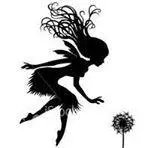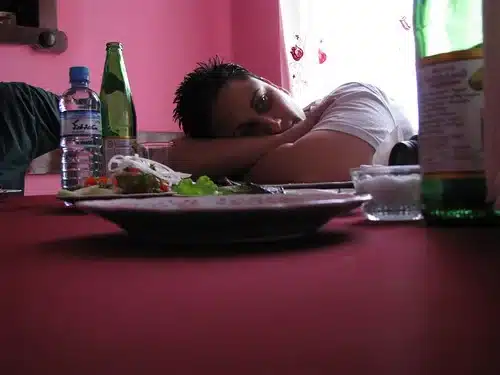Please scroll down for an English review.
אני אוהבת רומנים היסטורים והסופרת כותבת בז'אנר. הספר הקודם שלה, "הציירת משנחאי" היה בחלקו טוב. הוא לקה בפרטים מרובים ולא מעניינים. לכן, התחלתי לקרוא את הספר "ארץ הפלאות" בהסתייגות מסויימת.
זהו סיפורן של שתי חברות בגרמניה של שנות ה 30. אילזה הגרמניה, ורנטה שבמשפחתה קיים דם יהודי. הסיפור של אילזה ורנטה משולב בסיפור מסגרת של בתה של אילזה, אווה, שחייה בארה"ב.
הסיפור מתחיל בשנת 1933, היטלר עולה לשלטון ומניע תהליכים כנגד האזרחים הגרמנים ממוצא יהודי. עדין לא מדובר בתמונות הקשות שאנחנו מכירים מהשנים 1938 והלאה, אלא בתהליכים שנועדו להפריע לחייהם השלווים ולהשתלבותם בחיים האזרחיים בגרמניה.
בשנת 1935 היטלר מתבסס בשילטון, וקבוצות הנוער ההיטלראיות הופכות למושא חלומן של אילזה ורנטה. אבל באופן מפתיע רנטה לא מתקבלת כי חוקי הגזע אוסרים על מי שבמשפחתו זורם דם יהודי להצטרף לקבוצות שמתבססות על דם ארי טהור. רנטה נסערת. היא אינה מודעת לשורשיה וקשה מהידיעה שהוריה הסתירו ממנה מידע כל כך מהותי, היא העובדה סבה היה חייל מעוטר בצבא גרמניה במלחמת העולם הראשונה, ונלחם למען גרמניה.
חייה של רנטה הופעים לגיהנום; בן זוגה, רודי, מנהיג בהיטלר יוגנד, מתכחש לה והיא סובלת מהתנכלויות הולכות וגוברות בבית הספר.
זוהי גם נקודת תפנית ביחסיהן של אילזה ורנטה. החברות יתרחקו ככל שמצב המשפחתי של רנטה ילך ויחמיר.
אילזה, שטופת מח מהתעמולה ההיטלראית, יוצאת מטעם קבוצת הנערות ההיטלראיות לשליחות בכפר נידח שם היא נאנסת ע"י המפקד האלכוהליסט של האזור.
אילזה ורנטה יפגשו שוב בליל הבדולח. הנסיבות לפגישתן יהיו עגומות. אחרי ליל הבדולח הן יחדשו את הקשרים שלהן, אילזה מטעמיה שלה ורנטה מתוך כמיהה לחברות ולקירבה לאליזה.
אבל הפרידה ממששת ומתקרבת כאשר הוריה של רנטה מחליטים לשלוח אותה ואת אחיה לארה"ב והם גם משיגים אישורים לכך.
במקביל לסיפור של אילזה ורנטה, הקורא לומד על אווה בתה של אילזה.
את שנותיה הראשונוה, אווה בילתה בבית יתומים בצפייה לאמא שלה. אבל אילזה לא הגיעה לקחת אותה. ברגע האחרון לפני שמשפחה מאמצת אותה, אילזה חוזרת לאסוף את אווה לחייה החדשים.
היחסים בין אילזה לאווה רעועים: אילזה לא מוכנה לספר לאווה מיהו אביה. היא גם לא מספרת לה על ההיסטוריה האישית שלה. למעשה אווה חייה בתנאים של ניכור ריגשי.
היא גם לא מספרת לאווה סוד טראגי שמלווה אותה כמו צל.
לטעמי הספר סובל בעיקר משני פגמים:
העובדה שהסופרת בחרה לספר סיפור בתוך סיפור כאשר בסוף העלילה שני הסיפורים מתחברים מחייבת וירטואוזיות סיפרותית ועלילתית. משהו שלא מוצאים בספר הזה.
עד שהקורא מגיע לצומת האיחוד הוא מותש מהמעברים בין העלילות ומעומס הפרטים המיותר בחלקים שנוגעים לאווה ומתבררים רק בסוף הסיפור.
גם העובדה שהעלילה בנויה כבבושקה- מעטפת של סיפור מסגרת שאינו מעניין, שמסופר בפרקים מתחלפים עם סיפור מרכזי מעניין שיכל לעמוד בפני עצמו, מקשה על הקריאה. המעברים חדים ולא חלקים והתפרים בין העלילות גסים.
סה"כ הסיפור של אילזה ורנטה כתוב טוב מאוד. תמונת המציאות שהסופרת מציירת, מוכרת לקורא הישראלי והיא לא מחדשת באספקטים ההיסטוריים. יחד עם זאת הבחירה להתמקד בנוער הגרמני היא בחירה מעולה שמשקפת את המעורבות הגדולה של החברה האזרחית ובמיוחד הנוער הגרמני בעוולות כנגד יהודים.
לצערי, החלקים של אווה פשוט מיותרים ומורידים מאיכות הקריאה.
ארץ הפלאות/ ג'ניפר קודי אפשטיין
הוצאת מטר, 2021, 432 עמ'
דירוג SIVI –
איכות אודיו –

I enjoy historical novels, and this author specializes in the genre. However, I had reservations about reading "Wonderland" because of the excessive details in the author's previous book, "The Painter from Shanghai."
This is the story of two friends, Ilse and Renata, who lived in Germany during the 1930s. Ilse was German, while Renata had Jewish ancestry. Their friendship is interwoven with a framed story that centers on Ilse's daughter, Eva, who currently resides in the USA.
The story starts in 1933 when Hitler rose to power and began implementing policies against Germans of Jewish descent. This was not yet about the infamous images we know from 1938, but rather about measures aimed at disrupting their peaceful lives and their integration into civilian society in Germany.
In 1935, Hitler solidified his power, and the Hitler Youth groups became the object of Ilse and Renata's dreams. Renata is rejected due to racial laws that forbid individuals with Jewish heritage from joining groups based on Aryan blood. Renata is feeling upset. She recently discovered that she is unaware of her family history and feels hurt that her parents never revealed to her that her grandfather was a Jew. he was a decorated soldier in the German army during World War I and fought for Germany.
Renata's life turns into hell; Her partner, Rudi, a leader in the Hitler Youth, disowns her, and she suffers from increasing harassment at school.
This marks a turning point in the friendship between Ilsa and Renata as they drift apart due to Renata's worsening family situation.
Ilsa, brainwashed by the Hitlerian propaganda, goes on behalf of the group of Hitlerian girls on a mission to a remote village, where the alcoholic commander of the area rapes her.
Ilse and Renata will meet again during Kristallnacht. The circumstances of their meeting will be grim. After Kristallnacht, they will rekindle their connection. Ilse seeks to renew her ties for personal reasons, while Renata desires to experience Elise's friendship and closeness again.
Renata's parents decided to send her and her brother to the USA to obtain the necessary permits, which made their separation feel even closer.
As the story of Ilse and Renata unfolds, the reader is introduced to Eva, Ilse's daughter.
Eva grew up in an orphanage, hoping her mother would return for her. It took her six long years. When a family member is about to adopt her, Ilse finally arrives to take Eva away for a new life.
The relationship between Ilse and Eva is strained because Ilse has not revealed her father's identity or personal history to Eva, resulting in emotional distance between them.
She also keeps a tragic secret from Eva, which haunts her constantly like a shadow.
In my opinion, the book mainly suffers from two flaws:
The author opted for a story within a story, requiring narrative and plot virtuosity to unite them, which may require assistance to uncover in this book.
Once the reader reaches the point where the storylines converge, they may feel tired from the frequent changes in plot and the excessive details regarding Eva's character. Eva's story realization occurs after the book.
The book's plot is structured like a shell of an uninteresting framework story, told in alternating chapters, with a fascinating central tale that could stand on its own. The transitions between the two plots could be smoother, and the seams are rough.
Overall, IlseRenat's story is well-written. The author describes a reality familiar to Israeli readers and introduces no new historical information. However, the author's decision to focus on the German youth is an excellent choice that highlights the critical role of civil society, especially the German youth, in perpetrating injustices against Jews.
I'm sorry to say that the parts contributed by Ava are unnecessary and decrease the reading quality.
לגלות עוד מהאתר Sivi's Books
Subscribe to get the latest posts sent to your email.

